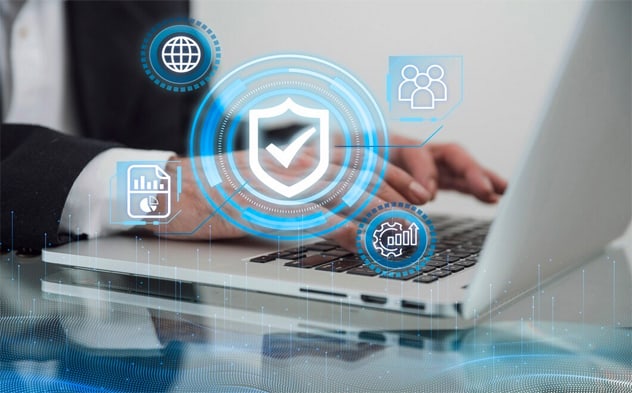
Are you an insurance company looking to modernize your operations with features like automated underwriting, fraud detection, customer analytics, and connected systems? IoT in insurance can solve your business problems! The Internet of Things (IoT) has dramatically changed the world by connecting devices and sensors. According to McKinsey, there will be 50 billion IoT devices by 2025. IoT has been transforming many industries, but the insurance sector is the newest and leading.
What parts of your business can be improved with IoT development services? What are the benefits and challenges of implementing IoT in insurance? Let’s find answers to these questions together!
The Impact of IoT on Insurance
It is no longer just a sci-fi term. Instead, it has become the organization’s foundation for simplifying complicated and tedious tasks and creating new ways to make money in the industry. The IoT insurance industry has made significant progress in various areas. It includes improving customer interactions and selling more products/services, preventing fraud to save costs, and providing digital ecosystems for connected health, innovative housing, mobility, and commercial lines. The IoT insurance industry is growing fast and changing the current landscape. Why not?
1. IoT in insurance lets you gather and analyze large amounts of data from devices like wearables, telematics, and smart home devices. This data helps you understand your target audience better. It allows you to create personalized insurance policies based on individual risk profiles.
2. You can identify potential hazards, prevent losses, and offer timely risk management solutions using real-time data. IoT devices can help with risk assessment and management by tracking and reporting on various metrics.
3. Telematics systems in cars can record driving habits and provide detailed information for risk assessment. Usage-based insurance policies promote safe driving and reduce insurance costs for policyholders by using actual driving behavior to determine premiums.
4. Investors see potential in the IoT insurance industry for growth and innovation. Companies like Allianz use IoT development services to use digital ecosystems like smart homes, connected health, and vehicles. It helps them create new ways to make money. As more people use IoT devices and technology changes insurance, you can make a lot of money by investing in this sector.
The Benefits of IoT Insurance and How It’s Changing the Industry
We looked at how IoT is affecting the insurance industry and the significant growth it has experienced. Why are companies interested in investing in this industry? How does IoT benefit the insurance industry? Let’s explore!
1. Improve Risk Assessment Accuracy
One significant advantage of IoT in insurance is improved risk management and fraud detection abilities. Custom IoT solutions use sensors and data to provide accurate and real-time business insights. We can quickly identify operations at risk or fraudulent claims in this situation. IoT insurance solutions take a proactive approach to reduce claims and minimize damage to your company, resulting in improved profitability.
2. Simplified Claims Processing
One advantage of using IoT in insurance is a quicker and more automated system for managing claims. Custom IoT solutions for insurance make processing claims faster and more efficient. IoT-connected devices can send you and your manager automatic notifications about incidents, making it quicker to start and resolve claims. Reducing time, effort, and resources needed for claims management improves customer satisfaction.
3. Reduced expenses
Businesses use digital transformation services to reduce costs and introduce innovation. That’s what IoT in insurance does! IoT insurance use cases can help you improve your business operations and save money. Automated risk assessment and fraud detection improve underwriting accuracy, reducing the likelihood of overpaying claims. In addition, using IoT technology to monitor and maintain insured assets helps prevent damage and lowers the number and seriousness of insurance claims.
4. Satisfied Customers and Better CX
Lastly, It changes things by allowing customized policies and extra services. You can use data from connected devices to provide your customers with personalized solutions, recommendations, and proactive risk management advice. It helps improve customer engagement, loyalty, and satisfaction. Who doesn’t want happy customers? They are the primary source of free marketing for your brand!
IoT in insurance has many benefits that attract people to invest in this popular technology. Leading brands such as John Hancock and Vitality are the top adopters of insurance solutions. What’s holding you back from joining this league, too? Contact us to begin developing IoT solutions for your insurance company!
IoT Insurance Use Cases: Using IoT for Insurance
We have discussed the effects and advantages so far. How can you use IoT enterprise solutions to gain a competitive edge in your organization? What are the main ways IoT can help insurance companies become global brands?
According to reliable sources, insurance companies today intend to incorporate the UN Sustainable Development Goals into their operations. The goals are to promote innovation, build future-ready policies, prevent risks, improve customer experiences, support sustainable and smart cities, offer affordable insurance coverage, and generate new business opportunities. Implementing IoT in insurance can cover all these goals. We’re not saying that.
The World Economic Forum and IoT Analytics found that 84% of IoT applications in insurance can support all the UN SDGs. Check out our list of the top IoT insurance use cases. By leveraging these, you can join the ranks of successful insurance companies worldwide. Check out our list of the leading IoT insurance use cases. By leveraging these, you can join the classes of successful insurance companies worldwide.
Where to implement IoT Development Services
You can implement IoT development services in these areas for growth and new opportunities:
1. Telematics for Commercial Auto Insurance
One of the primary uses of IoT in insurance is to make commercial auto insurance more efficient by using telematics sensors. Telematics devices in vehicles collect data on driving behavior to offer personalized insurance policies and adjust premiums accordingly.
Is it hard to understand? Imagine this: commercial vehicles equipped with smart telematics devices. These smart devices will track real-time driving information such as speed, braking intensity, and harsh driving conditions. How will it benefit you? It’s like personalized insurance. Insurers use this data to create policies that match your driving habits. If you are a careful driver, your coverage could cost less. Moreover, these more innovative policies promote safer driving habits and reduce the likelihood of accidents.
2. Smart Home Devices for Personal Property and Casualty Insurance
One of it’s exciting use is using smart home devices for property insurance. IoT devices like innovative security systems, smoke detectors, water leak sensors, and thermostats can notify your clients about potential risks in their homes. Curious?
They monitor their home all day and night and notify you and the insurance company of any issues. If there’s smoke in the living room or kitchen or a water leak in the basement, these connected devices will let everyone know. What does that mean?
It means less damage, fewer claims, and faster claim resolution. We make property insurance more accessible and more efficient by using IoT development services. This use case is great because it helps prevent damage, reduces claims, and allows quick response and mitigation of incidents.
3. Wearable tech for health and life insurance
IoT development services can revolutionize health and life insurance, which are essential parts of the insurance industry. Fitness bands and smartwatches can impact your client’s health insurance by collecting information about their lifestyle, exercise routine, and dietary habits. With this data, they can make custom health insurance plans that suit their lifestyle, resulting in fewer claims. To make the user’s text short and easy to read, you can rewrite it as follows: “How can I do that? Your customers’ healthy choices can result in improved insurance deals. IoT in insurance helps customers develop healthy habits and stay aware of their well-being, ensuring they are on the path to good health.
You can use fitness trackers, smartwatches, and health monitoring devices to gather information about people’s health and lifestyle choices. This information can help create personalized health insurance plans, encourage healthy habits, and promote preventive care. It will result in more accurate underwriting and better health outcomes.
4. Drones for Risk Assessment and Claims Processing
Another exciting use of IoT is drones for assessing risks and processing claims. Yes, those flying machines with excellent cameras. Insurance companies now use drones with high-resolution cameras to evaluate risks and inspect difficult or dangerous locations.
Drones capture high-quality photos and videos to assist experts in analyzing information. These machines assist with risk evaluations, damage assessments, and insurance claim processing, making things more efficient and cost-effective. Also, it helps save money. Imagine using drones as high-tech helpers in the insurance industry, thanks to IoT.
Industrial IoT Development Services for Commercial Property and Liability Insurance
Do you know about Industrial IoT services? They are famous for industries looking to enter Industry 5.0. IIoT services benefit the logistics, supply chain, aviation, and manufacturing industries. They assist in monitoring large machines and challenging areas. And guess what? It is a famous example of how IoT is used in the insurance industry.
Insurance companies are now using IoT development services to gather smart data. This data helps them create unique insurance plans for property and risks. The main goal is to improve control and ensure safety for everyone.
This use case helps you handle risks efficiently, provides tailored insurance, and prevents accidents. These devices monitor equipment performance, detect maintenance issues, and ensure workplace safety in IIoT. Hence, your team can easily leverage this data to offer custom policies to your clients.
1. Crop Monitoring for Agriculture Insurance
One interesting way IoT is used in insurance is crop monitoring devices for agriculture insurance. IoT is making agriculture insurance more efficient for farmers and insurers. Smart gadgets powered by IoT technology can monitor crop health, soil conditions, weather, and plant watering needs. Now, here comes the magical part. As an insurance professional, you can use this important information to do something great.
Farmers have a backup plan in case of bad weather or low yields. Think of it as an individual insurance plan for farmers. So much intelligence? IoT has made farming safer and more convenient. This data can help you evaluate risks in crop farming and provide tailored insurance policies for yield losses, weather damages, and other agricultural risks.
The insurance sector has advantages and disadvantages, like a coin with two sides. There are positive aspects to consider, such as the chance to have better interactions with customers and increase profits. Using IoT in insurance can present challenges, just like any new technology. What are these challenges? How can we overcome these challenges? Let’s discover together!
2. Changes in the Existing Insurance Models
The main challenge of using IoT in insurance is the disruption it causes to current models. Insurance executives face a dilemma with IoT. While there are advantages, such as decreased risk and fewer claims, there is a potential downside of reduced premiums and declining revenue in the long run. In addition, you might also encounter competition from car makers, home security firms, and tech giants.
IoT offers the potential for lower insurance premiums for safe drivers and healthy individuals. However, if it doesn’t affect everyone’s behavior, there may be significant penalties. It can lead to government obstacles because people will have to pay high premiums, slowing the growth of insurance products.
3. Slow Pace in Health and Life Insurance
One big problem in IoT insurance is the slow progress in health and life insurance. The health and life space involves dealing with compliance, regulations, and people. Insurers must handle multiple regulatory authorities, which can be long and tedious when scaling up.
4. Data Management and Ownership
One big challenge of using IoT in insurance is managing and owning the data. IoT development services rely heavily on data; the same goes for this industry. No matter what type of data it is – claims and policies or business insights and customer analytics – it must be handled efficiently to make intelligent decisions.
Dealing with the large amount of data from IoT can take time and effort. A good plan is necessary to manage all this information effectively. In addition, who owns this data is also critical. The complexity of data protection laws makes it a questionable trend.
To solve these problems, you’ll need an expert who knows much about IoT and has access to the best IoT consulting and development services for insurance industry.
Final Words
Consider using IoT development services to streamline your operations and explore new opportunities. Please bookmark our website for future reference. We will discuss top-rated IoT consulting services in upcoming articles for your convenience. If you want to find the best way to use IoT in insurance or need to hire IoT developers for your project, we can assist you with both.



